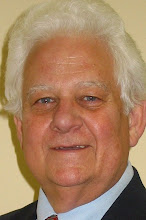
Consider the consumer's lifestyle!
As a hearing aid practitioner of 40 years, I’ve learned a great deal about people and technology. Certainly the technology has changed since I first began to practice. Back then, hearing aids were big, clunky and they weren’t very effective. Feedback, spikes in volume, limited tuning.
So, over the years, I’ve learned to stay current with the latest in hearing technology and with the consumers with whom I work.
The Discovery Phase of the Sales Arc
When a new client makes an appointment, or simply walks into one of my hearing aid retail outlets, I begin, not with a hearing evaluation but with a lifestyle evaluation. I want to know as much about the buyer as I can so, I pour us a cup of coffee, get comfortable on the couch and just talk for a while.
- type of work the consumer does
- how long s/he has noticed a change in hearing
- what the consumer does for recreation
- family situation
- common environments (We eat out at least twice a week!)
- impact of hearing loss on work and home life
- consumers’ priorities
Consumer Priorities
The most common priority is price. New buyers of hearing aids usually experience sticker shock when they realize that even an entry-level device is going to cost $1,000 – per ear! I urge each consumer to consider the quality of life benefits that a quality hearing aid delivers and to not let price be the number one priority.
Some buyers want a low-profile. Some want complete discretion with a CIC device. Some want convenience or the ability to use a cell phone without ear-splitting, whistling feedback. Part of my job is to learn what’s important to each client and, sure enough, each client has a different set of priorities.
For example, some want to be able to swim with the kids at the beach. It’s an important family activity enjoyed by the whole gang. In a case like this, I’d recommend a waterproof, or at least water-resistant hearing aid, one with a membrane to keep water away from the delicate circuitry.
On the other hand, if the customer leads a sedentary life, I’d move them toward (1) a lower-priced device that didn’t require a moisture-proof barrier or (2) a hearing aid that had more convenience features like automatic volume adjustment or wireless connectivity.
The Hearing Evaluation
Sometimes buyers have been to an audiologist or ENT doctor and come with a prescription. Even then, I still take the time to learn about the patient – something an audiologist or ENT might not do. Why? Because they’re in the business of developing empirical data and an accurate diagnosis that is then handed to me.
It’s my job to fit the right device to each consumer.
In other cases, I see a number of walk-ins who are “just browsing.” Well, they’re browsing for a reason. They recognize hearing loss. So, I let them browse and make myself available to answer questions.
Then, I go through my usual list of queries to develop a picture of the consumer and, if no hearing test has been performed, I employ a battery of tests to develop the empirical data I need to fit the consumer with the right hearing aid.
For example, I may discover during testing that a prospect has moderate or even severe hearing loss across all frequencies. My first question? How long has this hearing loss existed? If it happened overnight, or in a short time span, I send those individuals to an MD or ENT professional. A quick loss of hearing could easily be a sign of a stroke or some other serious medical condition.
However, if the hearing loss falls into the “expected” category, I now have empirical data that I can synch up with the lifestyle, budget and personal preferences of each consumer.
The Right Stuff
I know what’s important to the buyer and I have the evaluation data. This enables me to select two or three units from my product lines and offer options to the customer. Discrete and low-profile, flashy, low-cost or wireless connectivity – whatever the customer’s needs, I make sure to have several options.
This makes that buyer a stakeholder. Once a choice is made, I can quickly tune the devices if I have them in inventory, or have the devices overnighted and have them in the next day or two for a fitting.
The point is simple. A good hearing aid practitioner doesn’t sell hearing products. A good practitioner sells a better quality of life. An improved listening experience. The ability to stay on the job or in the game longer.
A good hearing aid practitioner is a good listener – especially during the discovery phase of the sales arc. Learn what’s important to the buyer and you’ll have lots of happy buyers, each a salesperson who spreads your business’ good name through good old word of mouth advertising.
Take the time to discover what’s important to each customer. That’s how you build a profitable hearing aid business.
Try it. I’ve been doing it for years. It works.


















No comments:
Post a Comment